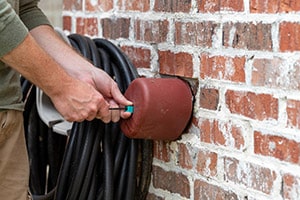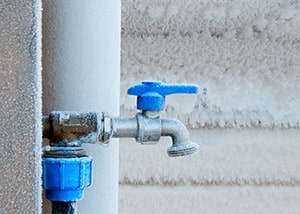Winter in Atlanta may not bring snowdrifts or blizzards, but freezing temperatures can sneak in a few times each season, posing a risk to your home’s plumbing. The last thing any homeowner wants is a burst pipe or water damage disrupting their routine. The good news is, with a few simple steps, you can protect your home and stay stress-free all winter long. Here’s how to prepare your plumbing when the temperature begins to drop.
Insulate Exposed Pipes
Pipes located in unheated areas of your home such as basements, crawl spaces, garages, and attics are more susceptible to freezing. The rapid drop in temperature can cause the water inside these pipes to expand, potentially causing them to burst. To prevent this, wrap exposed pipes with pipe insulation made of foam or rubber. You can find these materials at most home improvement stores, and they’re typically easy to install with a little tape. Be sure to cover any joints, bends, or connections, as these spots are especially prone to temperature changes.
For an extra layer of protection, you may also want to consider installing heating cables for particularly vulnerable pipes. This provides added warmth during extreme cold spells, though professional installation is recommended for the best results.
Seal Cracks and Openings
Drafts can make their way into your home through small gaps around doors, windows, and exterior walls, leading to colder interior temperatures and increased risk to your plumbing. Carefully inspect your home’s exterior for cracks, gaps, or any areas where air might seep in. Use caulk to seal smaller gaps around window frames, door trim, and any exposed piping that leads outside. Weather stripping is an effective option for doors and movable window sashes.
Don’t forget about areas that are less obvious but can still impact your home’s warmth. Look for gaps around dryer vents, electrical wiring, and plumbing entry points. A thorough sealing job will help maintain a stable indoor temperature, reducing strain on your pipes and your heating system.
Keep Cabinets Open
Pipes located on exterior walls, such as those under kitchen and bathroom sinks, are at a higher risk of freezing during cold nights. By opening the cabinet doors around these pipes, you allow warmer indoor air to circulate more freely and keep the pipes closer to room temperature.
This is especially important during prolonged cold snaps. You can also pair this tip with running a small heater in nearby rooms to maintain a consistent level of warmth. Just remember to keep children and pets away from open cabinets to ensure safety around any cleaning supplies or sharp objects that may be stored inside.
Drip Your Faucets
When temperatures are expected to drop below freezing, let a small trickle of water run from faucets connected to vulnerable plumbing. Moving water is less likely to freeze, so this simple step can reduce the risk of pressure buildup in pipes, which is the main cause of bursting. Aim for a steady drip, not a full stream—just enough to keep the water flowing gently.
Focus on faucets attached to exposed pipes, exterior walls, or plumbing that runs through unheated areas. Keep in mind that even a tiny flow of water can make a big difference in reducing the risk of freezing and burst pipes.
Disconnect Garden Hoses and Drain Outdoor Faucets
One of the simplest yet most effective winterizing steps is to disconnect and drain your garden hoses. Leaving hoses attached to outdoor faucets can trap water in the pipes leading into your home, increasing the risk of freezing. After disconnecting, drain each hose completely and store it indoors or in a covered area.
Once the hoses are removed, drain outdoor faucets by turning off the water supply and opening the tap to let any remaining water escape. If you don’t already have frost-proof outdoor spigots, consider investing in faucet covers or insulation sleeves for added protection.
Check Your Water Heater
Atlanta’s mild winters may not see heavy snow, but chilly nights can put more strain on your water heater. Before winter hits in full force, take the time to inspect your water heater. Look for any signs of leaks, rust, or sediment buildup, which can affect its efficiency and lifespan. Draining and flushing your water heater can remove accumulated sediment, improving performance and heat consistency.
If your water heater is older or showing signs of wear, you might consider scheduling a professional inspection or upgrading to a more efficient model. Proper maintenance will ensure you have reliable hot water all winter long.
Locate Your Main Water Shut-Off Valve
In case of a plumbing emergency, like a burst pipe, knowing where your main water shut-off valve is located can prevent extensive water damage. Make sure everyone in your household knows how to quickly turn it off if needed. This valve is typically located near where the main water line enters your home, often in a utility room, basement, or outdoor access point.
Practice turning off the valve so you’re familiar with its operation. This small preparation step could save you significant time, money, and stress in the event of a plumbing issue.
We’re Here When You Need Us
Taking the time to winterize your home can make all the difference when freezing temperatures hit. If you run into any issues or want expert help with your plumbing, Fix & Flow is here to support you. Give us a call or schedule your appointment online today—because keeping your home running smoothly is what we do best.

